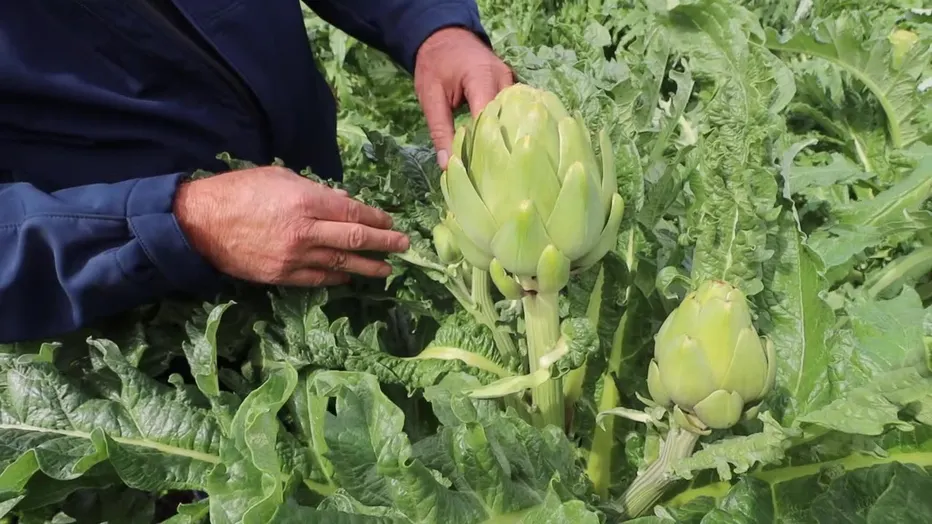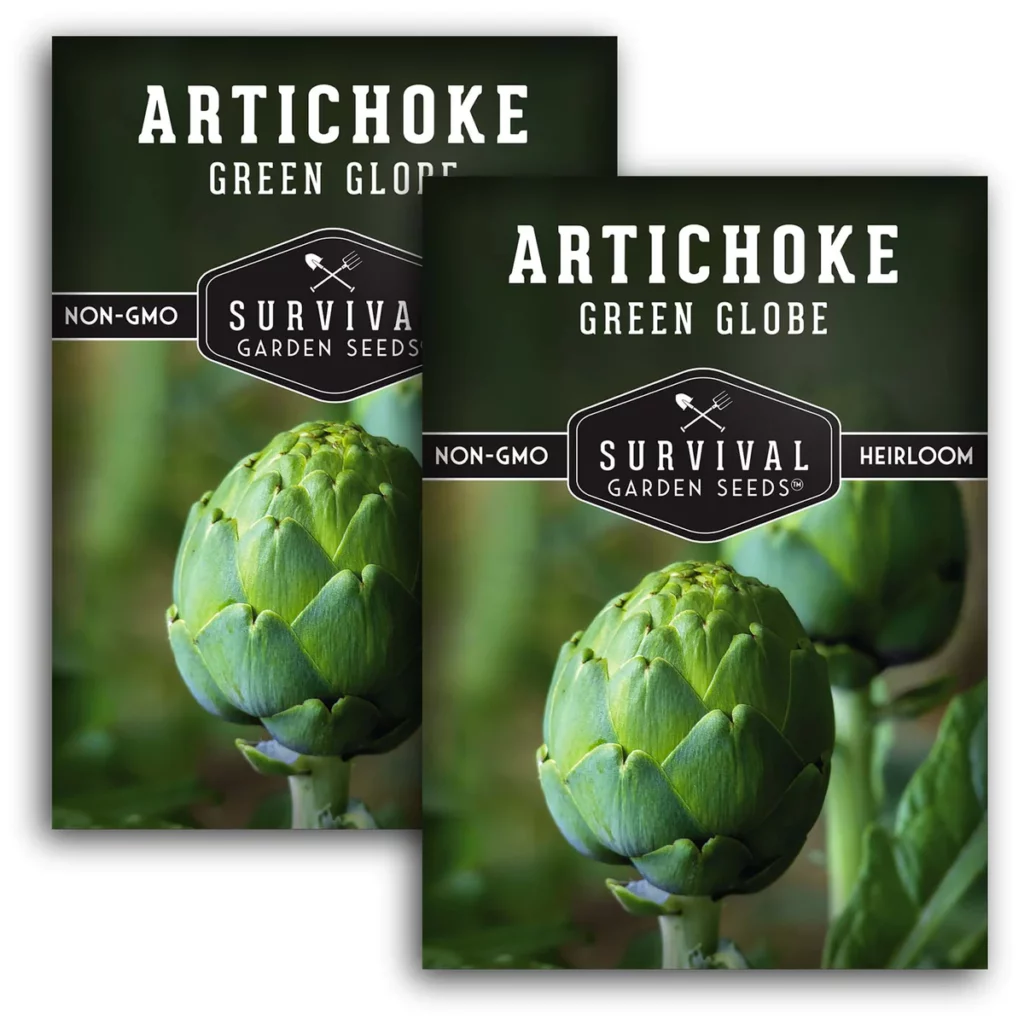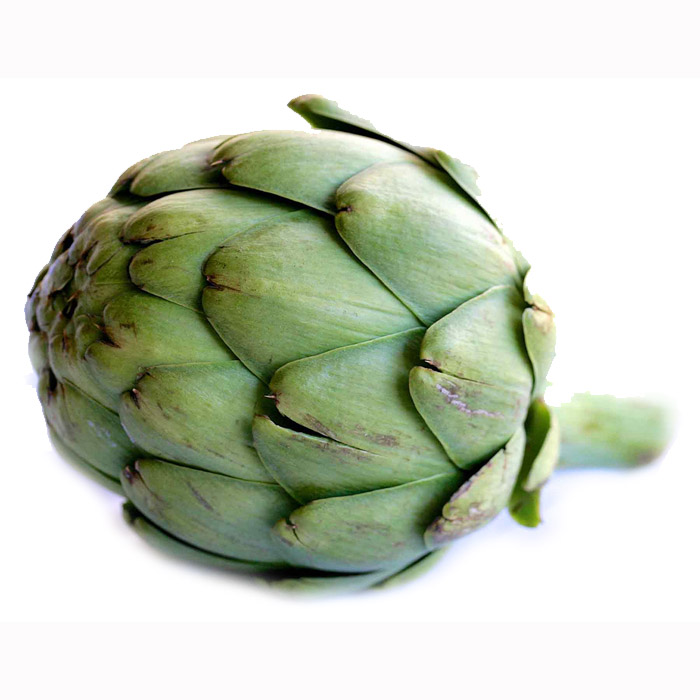
Artichokes are a gourmet, delicious vegetable that you can easily grow in your own vegetable garden next to your tomatoes or pumpkins! They’re perennials high in Vitamin C among other nutrients. If you are thinking about growing them in your garden, you can choose from several methods. Let’s take a look at them!
Growing Artichokes from Seed
Seeds come from the flowers of the artichoke. You can purchase these from a nursery or take them from a fully developed flower.
- Artichokes are sensitive to frost and you should seed indoors if you live in a colder climate or region where there is a danger of frost during the growing season.
- Ideal soil temperatures for germinating range between 60 – 80F.
- Only plant your artichoke seedlings after all danger of frost has passed.
Your local frost date will depend on your region.
If your region is not subject to frost, you can plant the seeds directly into the soil without starting it indoors.
Seeds need to be stratified before they will grow. This means they need to be exposed to cold for a time period, which simulates a winter cycle.

- Place your seeds in a damp napkin inside a plastic container or bag to keep them from drying out.
- Leave them in the fridge for 2 weeks. Then they are ready to plant!
- Make sure you start a few extra seeds, in case they don’t all germinate.
Plant your seeds 0.5 inches deep and give each plant a 5 foot square to grow in with no tree roots or other garden plants inside that square.
Artichokes grown from seed won’t produce any flowers in their first year. If you’re willing to wait until the second year for a crop then go ahead and plant from seed; otherwise, consider buying a started plant from a nursery.
Growing Artichokes from Crowns
Artichokes can be grown from crowns too. Artichokes are self-propagating, and they do this by sending off-shoots from the root system that pop up around the parent plant. You can dig these pups up and move them, and you should, since they will otherwise compete with the parent plant for nutrients and sunlight.
Make sure you get as much of the root as you can. The artichoke crown can tolerate some rootlets being cut but you should still be careful.
Spacing
Give each plant a 5-foot square plot to grow in.
- This will give enough space for the relatively large leaves of your artichokes.
- Full sun is necessary for artichokes so don’t plant them in the shade or near large trees.

Watering & Fertilizing
Artichokes should be watered regularly in order to keep the soil moist. Consistent watering will give you tasty artichokes at the end of the growing season. Make sure the ground is moist but not waterlogged, since sitting water promotes diseases.
You should also use a lot of fertilizer on your artichokes. They are heavy feeders, so they require more nutrients than most vegetable crops.
Harvesting
Unlike most vegetables, the part of the artichoke you eat is the flower.
- Artichoke flowers are ready to harvest when the leaves on the outside of the flower begin to peel back from the body of the flower.
- Timing is important, since the flower becomes bitter and inedible as it finishes developing.
- Once the leaves have all separated from the flower, it is too late.
- Use pruning shears to harvest artichokes rather than a knife or scissors.
When you are ready to harvest, cut the stem roughly an inch below the base of the flower. Artichokes can be stored in the fridge for up to 2 weeks.
Varieties of Artichokes
- Green Globes – this is the most popular artichoke variety. This is the one that you’ll buy at the grocery store. It does well in warm regions with mild winters.
- Colorado Star or Imperial Star – these two varieties do well in colder climates.
- Cardoons – these are a special variety of artichoke that is grown for its stems rather than the flower. Technically, artichokes are a human-bred variety of cardoons selected for large flowers.
Sunchokes – also known as Jerusalem Artichokes, they are also popular – but they’re technically not a real artichoke! They’re closely related to sunflowers, and you can grow them from the tubers that you buy at the store. These tubers resemble potatoes and can be mashed or fried the same way as with a potato.
Frequently Asked Questions
Nearly 100% of all artichokes grown in the US come from California. The town of Castroville is known as the Artichoke Center of the World since roughly two-thirds of the State’s artichokes are grown nearby. The coastal regions of southern California closely resemble the Mediterranean which is why they thrive so well here.
Can you grow artichokes in Florida?
You certainly can! Until recently, artichokes were thought to be impossible to grow in Florida since they depend on a winter cold cycle that doesn’t happen in Florida. Artichokes produce a hormone known as Gibberellic acid during the cold season, so treating the plant with this hormone will cause it to flower without having to get cold.
Can you grow artichokes in pots?
You can definitely plant artichokes in pots, which is ideal for growing in colder climates. This way, you can bring them inside for the winter. Pots should be at least a foot in diameter, bigger than pots for most vegetables. 5-gallon pails can be used as long as you drill holes in the bottom for water drainage.
Can you grow artichokes in containers?
Absolutely! Since artichokes are large plants, you should use a container at least 3 feet wide and a foot deep. Grow only one plant per container. Like pots, having your artichoke plants in containers allows you to bring in your plants for winter or if there is a frost warning.
Do artichokes grow above ground?
Yes, the edible portion of the artichoke (the flower) grows above ground. Artichoke plants grow large leaves that can take up a lot of space, up to a 5 foot square.
